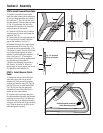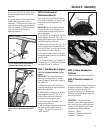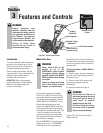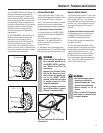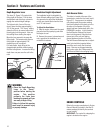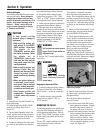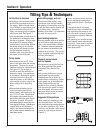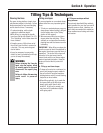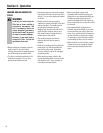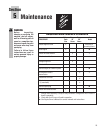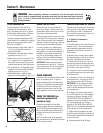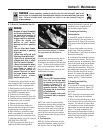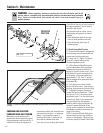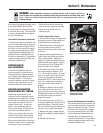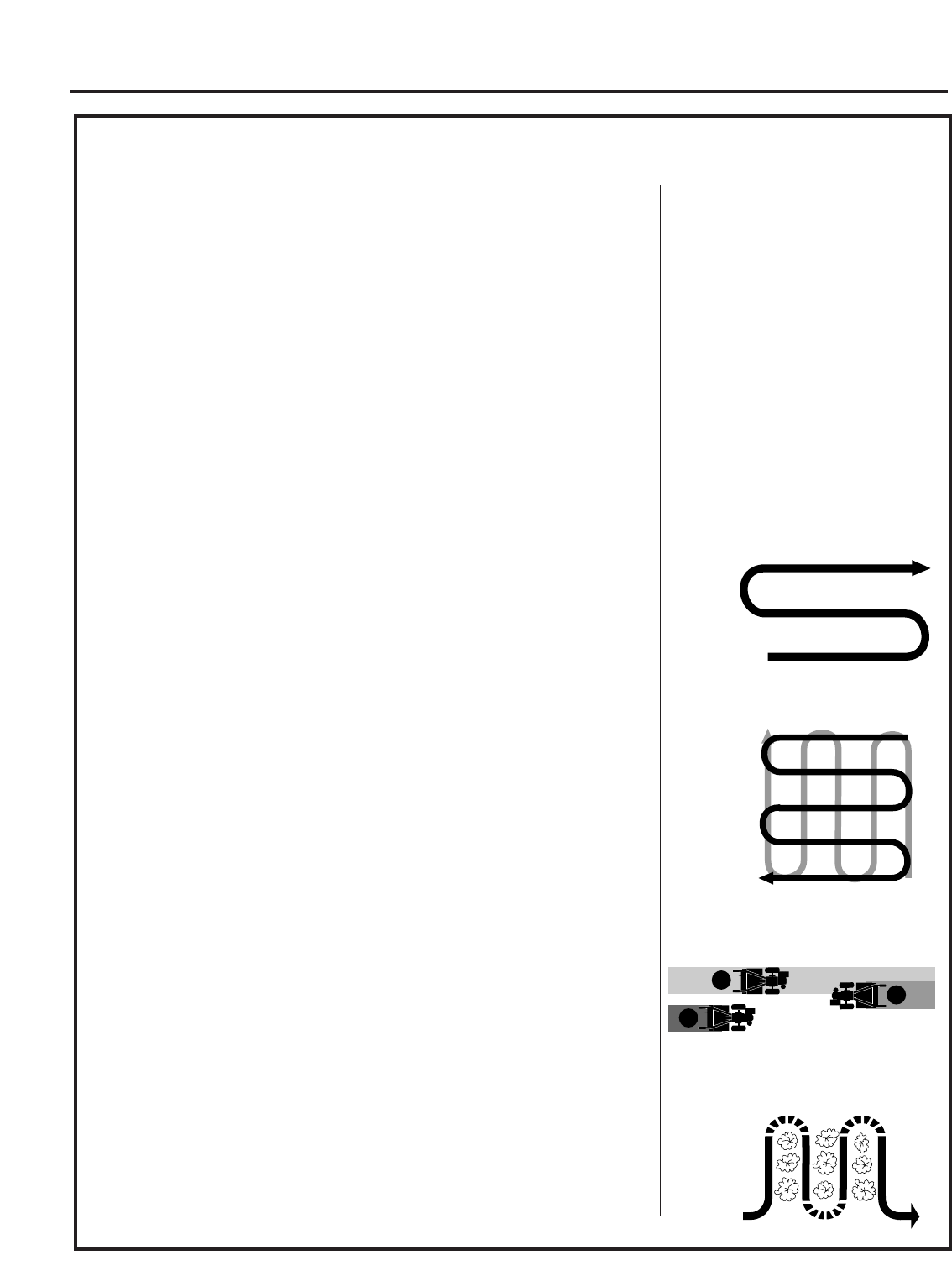
16
Section 4: Operation
Tilling Tips
&
Techniques
Let the tiller do the work
• While tilling, relax and let the wheels
pull the tiller along while the tines do
the digging. Walk on the side that is
not yet finished (to avoid making foot-
prints in the freshly tilled soil) and
lightly, but securely grip the handlebar
with just one hand. See Figure 4-2.
• Avoid the temptation to push down on
the handlebars in an attempt to force
the tiller to dig deeper. Doing so takes
the weight off the powered wheels,
causing them to lose traction. Without
the wheels helping to hold the tiller
back, the tines will attempt to propel
the tiller backward toward the
operator– often causing the tiller to
skip rapidly across the ground.
Tilling depths
• When preparing the soil, till a fresh
path on each pass rather than overlap-
ping passes. This gives the wheels
maximum traction on undisturbed soil.
See Figure 4-6. Dig as deeply as
possible on each pass without over-
loading the engine. Later passes can
be overlapped. (Watering the garden
area a few days prior to tilling will
make tilling easier, as will letting the
newly worked soil set for a day or two
before making a final, deep tilling
pass.)
• When cultivating (breaking up the
surface soil around plants to help
destroy weeds), adjust the tines to dig
only 1-1/2" to 2" deep. Using shallow
tilling depths helps prevent injury to
plants whose roots often grow close to
the surface.
If needed, lift up on the
handlebars slightly to prevent the tines
from digging too deeply.
Cultivating on
a regular basis not only eliminates
weeds, it also loosens and aerates the
soil for better moisture absorption and
faster plant growth.
Avoid tilling soggy, wet soil
Tilling wet soil often results in large,
hard clumps of soil that can interfere
with planting. If time permits, wait a day
or two after heavy rains to allow the soil
to dry before tilling. Test soil by
squeezing it into a ball. If it compresses
too easily, it is too wet to till.
Avoid making footprints
Whenever possible, walk on the untilled
side of the unit to avoid making foot-
prints in your freshly tilled or cultivated
soil. Footprints cause soil compaction
that can hamper root penetration and
contribute to soil erosion. They can also
“plant” unwanted weed seeds back into
the freshly tilled ground.
Choosing correct wheel
and tine speeds
With experience, you will find the “just
right” tilling depth and tilling speed
combination that is best for your
garden.
Set the engine throttle lever at a high
enough speed to give the engine
adequate power and yet allow it to
operate without overloading it. Fastest
engine speeds may be desirable when
making final passes through the
seedbed or when cultivating. Selection
of the correct engine speed, in relation
to the tilling depth, will ensure a suffi-
cient power level to do the job without
causing the engine to labor.
Suggested tilling patterns
• When preparing a seedbed, go over
the same path twice in the first row,
then make individual passes right next
to each other (see Figure 4-6). When
finished in one direction, make second
passes at a right angle as shown in
Figure 4-7.
In very hard ground it may take three
or four overlapping passes to thor-
oughly pulverize the soil. (See Figure
4-8.)
• If the garden size will not permit
lengthwise and then crosswise tilling,
then overlap the first passes by one-
half a tiller width, followed by succes-
sive passes at one-quarter width (see
Figure 4-8).
• With planning, you can allow enough
room between rows to cultivate (see
Figure 4-9). Leave room for the hood
width, plus enough extra room for
future plant growth.
1
2
3
Figure 4-6
Figure 4-7
Figure 4-8
Figure 4-9



